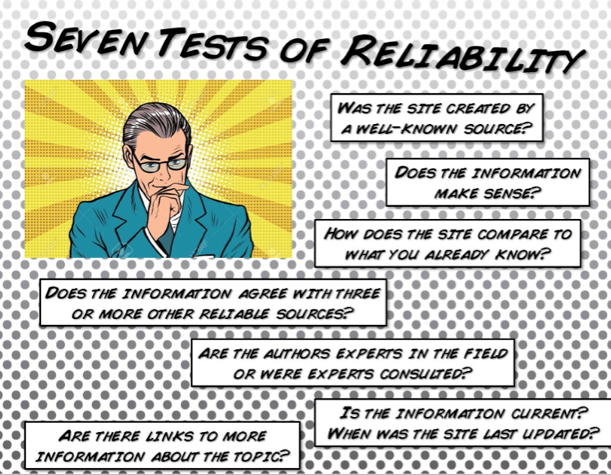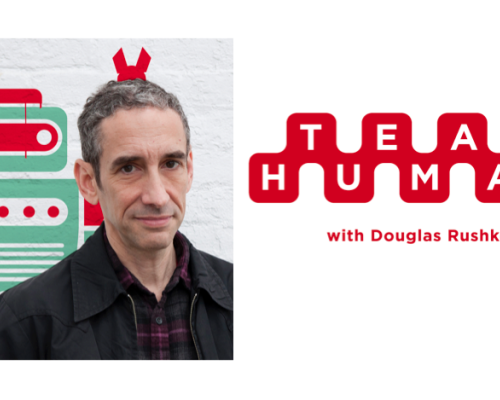Oh the Humanity: Technology Takes a Back Seat to Practice at IntegratED
Date
“When did school become work…when did it become…job training?” Media Theorist Douglas Rushkoff asked rhetorically, his hands gripping the side of the lectern like a Baptist minister. “When did we go from human futures to stock futures? Teaching is a subversive activity: we need to arm children with the ability to undermine utilitarianism!”
Rushkoff was the closing keynote at this year’s IntegratED conference in Portland. His comments were evocative of the conference’s subtle thematic undercurrent: that the era of “technology for technology’s sake” is over.
“Instead of people using technology, technology now uses people,” Rushkoff continued. “Every time you swipe on your phone, it gets smarter about you an you get dumber about it. We are the “things” in the Internet of Things!”
And while this year’s workshops and presentations weren’t preoccupied with reverting to blackboards and slates, they weren’t about blindly worshipping the latest shiny new innovation either. They were, instead, focused on the practices that best facilitate learning in today’s classrooms.
—
Bobby McDonald—founder and CEO of Parlay Ideas—promoted the act of “discussion” as one of the top ways to drive learning outcomes with his Making the Case: Student-Driven Discussions in the 21st Century Classroom presentation. McDonald maintained that sustained student-driven discussion is a conduit for success, as it can move the needle across many things such as student achievement, citizenship and Social Emotional Learning.
Discussion creates a consensual dedication to arriving at the truth through the sharing of views, the consideration of new perspectives, empathy and reflection, and compromising to solve problems. But there are challenges: The same kids tend to always talk, and the same kids tend to never talk. In fact, only 25% of students contribute meaningfully. Time is also a challenge, as it takes time to plan effective discussion questions.
McDonald’s company—Parlay Ideas—develops discussion curricula and content. These include materials for asynchronous discussion both in class, online and through round table experiences. He closed his presentation by explaining the company’s Socratic circle methodology that tracks participation, provides structure and scaffolding to make discussion more meaningful.
—

“How do we teach students to get the best information in the world? “ posed author, trainer and Fifth Grade Teacher Scott Bedley during his Critical Thinking in Digital Literacy: Teaching Students to Utilize Credible Sources presentation.
Bedley cited a Stanford University study showing that—during a short period of time—35 million shares occurred around unsubstantiated information. False information in the internet is trending towards a critical mass. He then introduced three classroom practices—Research Communities, Facts Forward and a Fake News Challenge—to address the false information phenomenon. Research Communities are a structure to design better research-based lessons. They lay out a framework for developing questions, examining sources, source proofing/defending, and reflection on process.
Next, Bedley shared the Seven Tests of Reliability:
- Was the site created by a well-known source?
- Does the information make sense?
- How does the site compare to what you already know?
- Does the information agree with three or more other reliable sources?
- Are the authors experts in the field or were experts consulted?
- Is the information current? When was the site last updated?
- Are there links to more information about the topic?
Lastly, Bedley discussed how the classic game Two Truths and a Lie could be used to teach students how to sniff out Fake News, and shared several resources such as the Pants on Fire podcast—a game show for kids to help them to discern what’s true from what’s false— and the Fake News Generator.
—
Melissa Lim is a former elementary school teacher who has been working in learning, teaching and technology for nearly two decades in Portland Public Schools. Her presentation, Using Online Tools for Collaboration & Productivity Resource Guide, began with participants setting their intentions for learning: helping everyone to be fully present so they got the most from their time.
Lim shared a dizzying amount of resources, diving into Add-Ons for popular Google apps such as Docs, Sheets, Slides and Forms and dozens of helpful tools for: Communication; Note taking; Productivity; Scheduling; Video; and much more.
Educators walked away with a proverbial kitbag of practical solutions for their classrooms.
—
“Stop thinking of drawing as an artistic process,” educator and technology coordinator Manuel Herrera cautioned during his presentation, Drawing as a Thinking Process. “You don’t need fancy tools: just paper, pencils, and imaginations.”
Visual thinking, as Herrera explained, is a way of pushing information to the students and letting them literally “draw” their understanding.
“Why do we draw?” Herrera asked the group of teachers and administrators. Some of the responses included: to listen, to learn, to visualize time, to share, and to problem solve. The group also explored the benefits of storyboarding in the classroom (tip: use notecards as they can easily be moved around), mind maps (using pictures or words to place relationships) and good, old-fashioned brainstorming (Herrera relayed a project that had sixth graders brainstorming and designing games for third graders).
Herrera also advised teachers looking to involve drawing more comprehensively into their curriculum to allow students to use only one color, as it saves a great deal of class time.
—
Graduate Research Assistant Kristina Stamatis and IT and Technical Services Manager Bud Hunt led the PBL, SEL, & Language Arts: These Things Belong Together presentation. Thinking from a student’s point of view, Stamatis and Hunt had attendees asking themselves “How is the world composed for us, and how do we compose our world?”
The pair discussed projects to help students to change the conversation about the issues that are important to them. One project involved a series of teen-specific news headlines, with children asked to think about: “How are teens portrayed in this headline? What would you say to the person who wrote this headline? How would you want to change the conversation about this issue?”
Next, Stamatis and Hunt led the group through a comprehensive process of developing student PSAs (Public Service Announcements): from a Research and Design survey to analyzing data to creating a PSA messaging strategy. A sample student PSA advocating for a four-day school week combined a personal perspective with Adobe Express, resulting in a highly persuasive presentation.
—
With Douglas Rushkoff’s closing From Figure to Ground: How Tech Threatens to Turn Education From an End to a Means keynote, the theme of using technology in the classroom only when it best serves students was brought to a rousing conclusion.
As Rushkoff preached: “The capital “R” reason of education is learning: education for its own sake, education as a process.” And, judging from the enthusiasm of the teachers in attendance, the crowd of educators were greatly enjoying the process: for their sakes, as well as those of their students.

